Computational Biology
The Computational Biology Core provides assistance in experimental design and data processing pipelines for high-throughput datasets generated in individual projects, particularly for DNA/RNA sequencing data. CBC's assistance falls broadly into the categories outlined below.
- Experimental Design and Power Analysis
- Benchmarking
- Technology Assessment
- Software Engineering
Data Science
The team of data scientists at CCV provide support for Brown researchers who would like help with statistical modeling, machine learning, and writing scientific software. The breath of methods with which we have expertise is broad—spanning anything from frequentist or Bayesian statistical inference to modern machine learning methods such as deep learning and reinforcement learning.
Hardware Purchasing
CCV's High-Performance Computing (HPC) Architect and HPC Systems Engineers have many decades of combined experience building and maintaining supercomputing systems for scientific research. They also have excellent relationships with many hardware vendors.
Are you preparing a grant proposal that involves a hardware purchase as part of a condo on Oscar? Or do you have an existing award, and you are considering a condo purchase? CCV is happy to help you determine what hardware would best satisfy your research computing needs.
CCV can also help provide quotes from hardware vendors that you may include as part of a grant proposal's budget.
If you would like to schedule a consultation, please complete the intake form linked below.
High-Performance Computing
CCV's team of research software engineers help researchers get the most out of Brown's high-performance computing (HPC) resources. They provide a range of services, including:
- Custom software development, including parallelization of existing programs
- Debugging of programs
- Code profiling to identify bottlenecks and optimize performance
- Assistance using Oscar, Brown's research computing cluster
- Assistance accessing computational resources made available through XSEDE
If you would like more information on CCV's HPC services, please contact support@ccv.brown.edu.
Software Engineering
CCV's research software engineers work with researchers to develop scientific software that is essential to conduct their research. This includes, for example, the development of tools and libraries for working with data, building workflows and infrastructure, and web application development. Our team of research software engineers also work with researchers to help take existing software and optimize it for performance and efficiency.
We have expertise in C, C++, CUDA, Fortran, JavaScript, Julia, Matlab, OpenCL, Python, R, and SQL. To achieve best practices in reproducible research, we use state-of-the-art technologies like Docker, Git and GitHub, Conda, among others.
Visualization
CCV's team of graphics software engineers provides a wide range of services to assist researchers at Brown with visualization projects, including:
- Expertise with graphics software and packages
- Familiarity with a wide range of cutting-edge visualization hardware
- Custom software development
- Experience implementing advanced visualization technology in labs and work environments across campus
Since its inception, CCV has been dedicated to supporting the academic community by developing interactive software designed to render and visualize datasets and models in 3D environments. These environments can be displayed across a wide range of platforms, including:
- Monitors
- VR headsets
- Holographic displays
Software We Use
To deliver high-quality solutions, we leverage the following technologies:
- Unity 3D: Creating immersive, real-time 3D applications
- WebXR: Enabling cross-platform interactive experiences on the web
- Custom Engines: Tailored engines for project-specific needs
- Paraview: 3D visualization application designed for scientific data analysis and visualization (Also available in Oscar).
Our Project Portfolio
Below we show a few of projects we have developed to enhance research, education, and exploration through interactive 3D visualization.
Draw On Air
DrawOnAir is a haptic-aided input technique for drawing controlled 3D curves through space. Its implementation was later called Cave-Painting and used as an artistic medium that uses a 3D analog of 2D brush strokes to create 3D works of art in a fully immersive Cave environment. It is used for scientific research in the virtual reality theater YURT at Brown University. The Center for Computation and Visualization (CCV). CCV collaborated to implement a modified version of the software that extends its capabilities to HMD(VR) devices such as Oculus Quest and Samsung Odyssey on Windows platforms
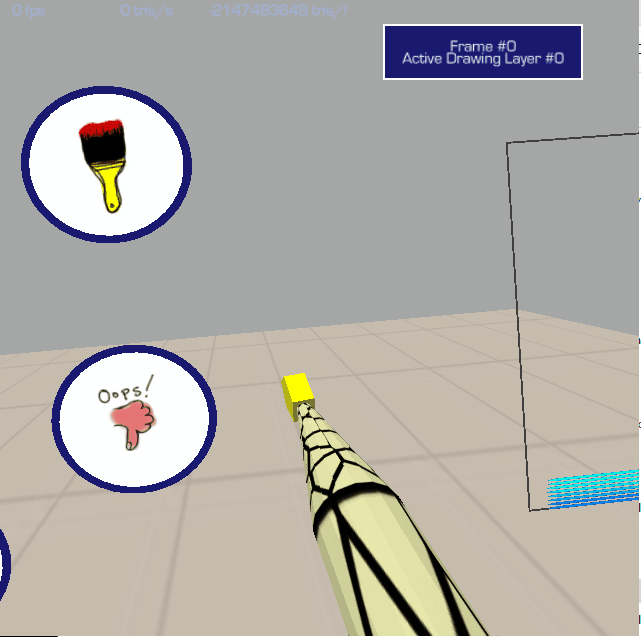
VR-Hearts
A collaboration with the Biomedical Engineering Department at Brown University. This project enables students to visualize and analyze 3D models of hearts with various anomalies in real-time using VR.

Narragansett bay 3D viewer
The 3D volume of Narragansett Bay and Rhode Island Sound below displays predictions from the Ocean State Oceanographic Model for salinity levels on July 15, 2018, at low tide. This visualization supports transfer functions and animations which allow users to explore salinity concentration at a specific date dynamically.
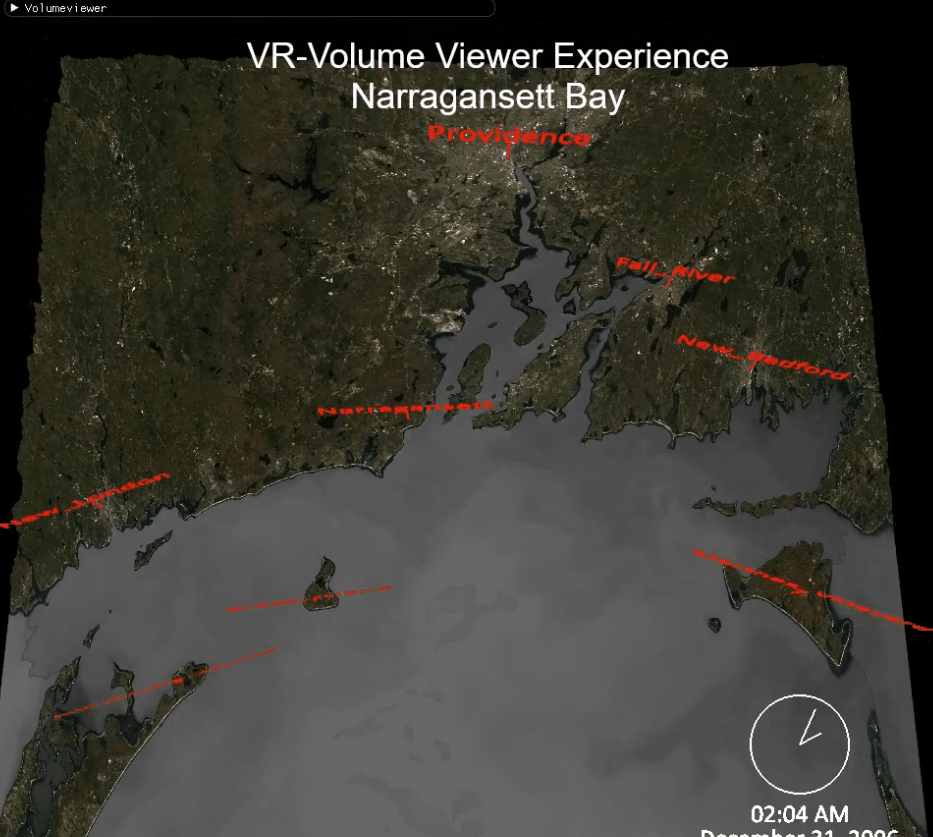
We have a fully interactive version of this application tailored for the Rhode Island Data and Discovery Center website. Follow this link and play with it.
Egyptology 3D
A VR visualization of the inscriptions found in the Pipi Pyramid in Egypt. This project is a collaboration with the Egyptology Department to enhance classroom activities, allowing students to explore and analyze the inscriptions in an immersive way.
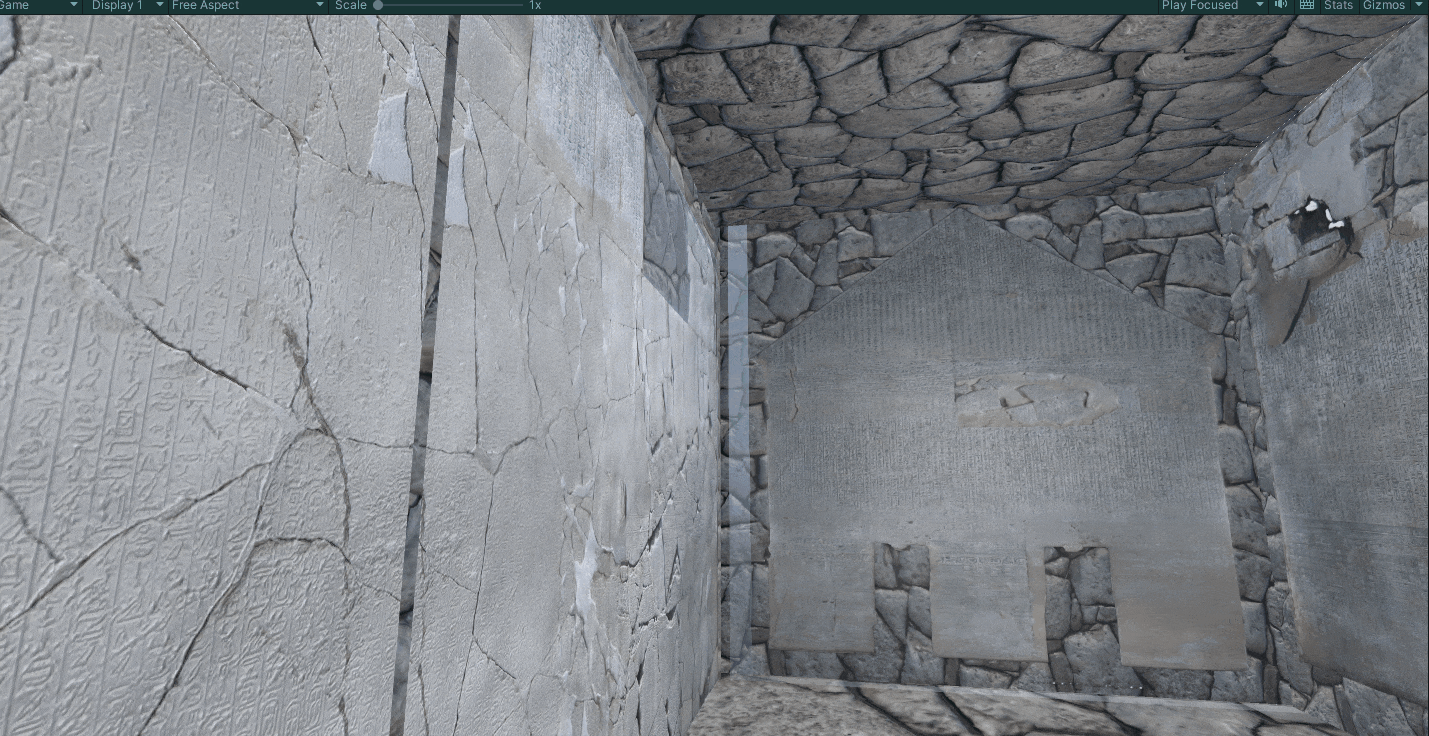
Legacy Visualization Systems (Not supported)
Previously, CCV was responsible for maintaining and developing software for large-scale mixed reality devices. One of our projects involved the CAVE (Cave Automatic Virtual Environment) VR system, which consists of multiple large projection screens or walls that surround the user with high-resolution 3D visuals.
Unlike traditional VR headsets, a CAVE provides a fully immersive experience without requiring bulky hardware. Users can explore 3D visualizations naturally, making it ideal for scientific research, data analysis, and virtual prototyping.
Examples of such systems included the CAVE located in the Granoff Building and the large-scale virtual reality theater YURT.
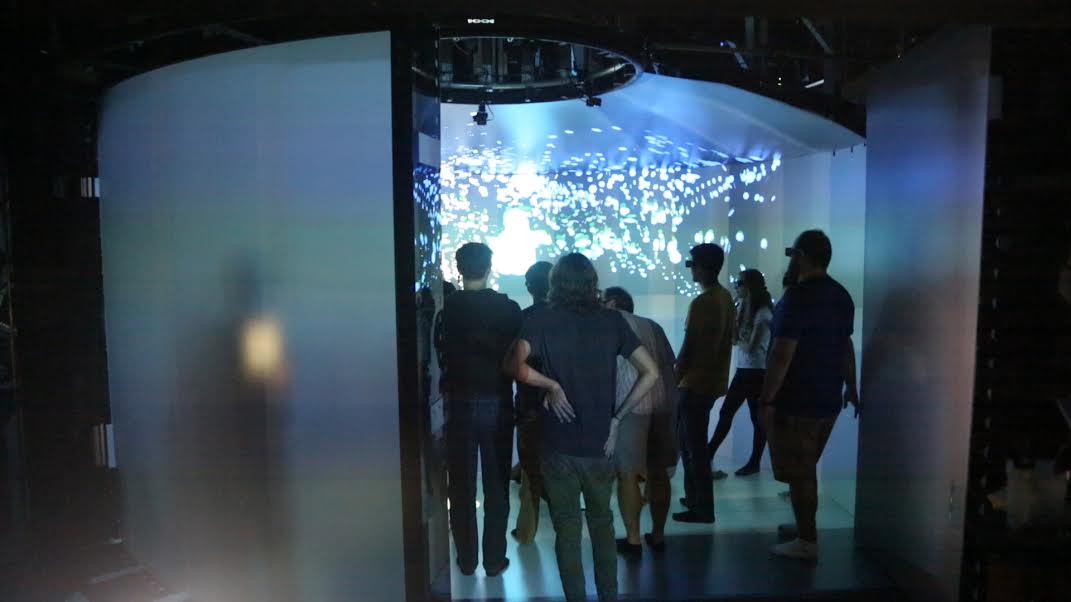
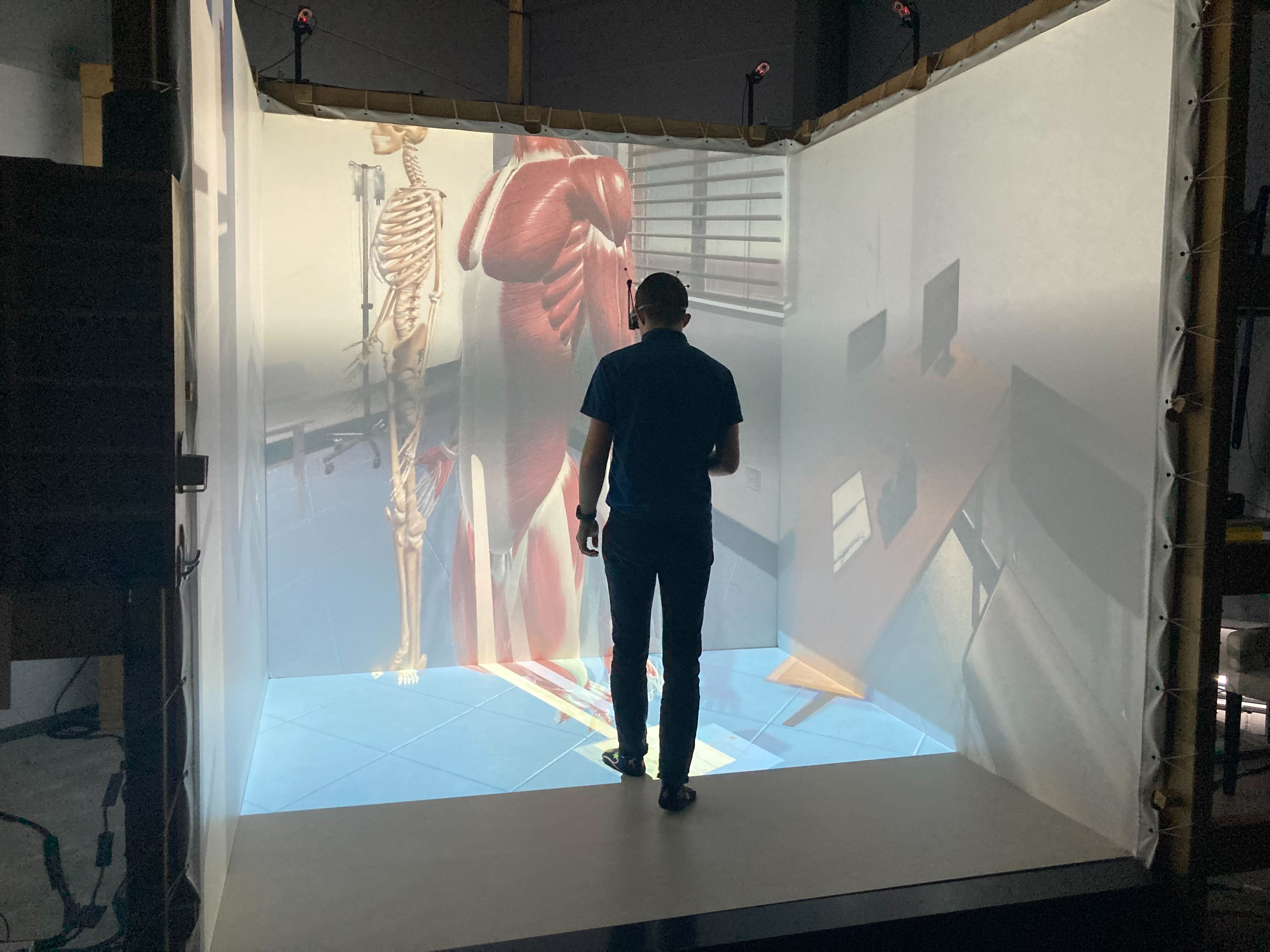
Contact
If you would like more information on CCV's visualization services, please contact support@ccv.brown.edu.